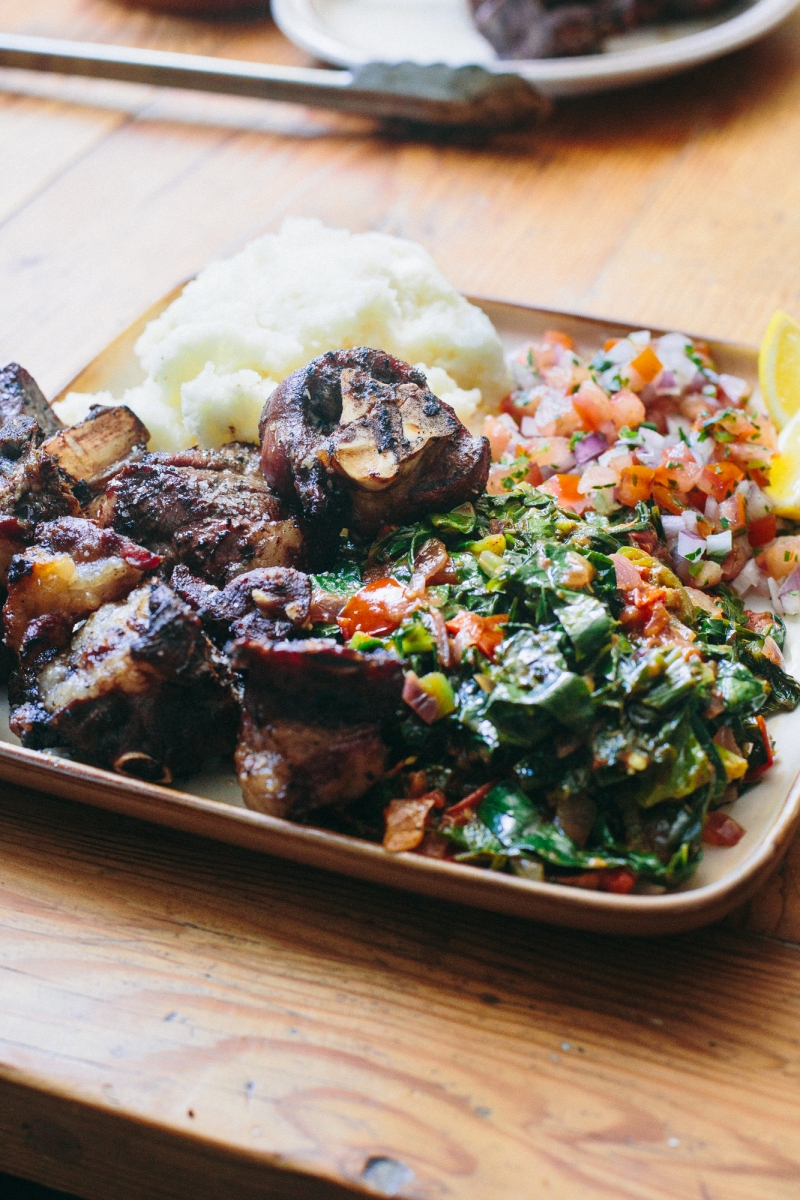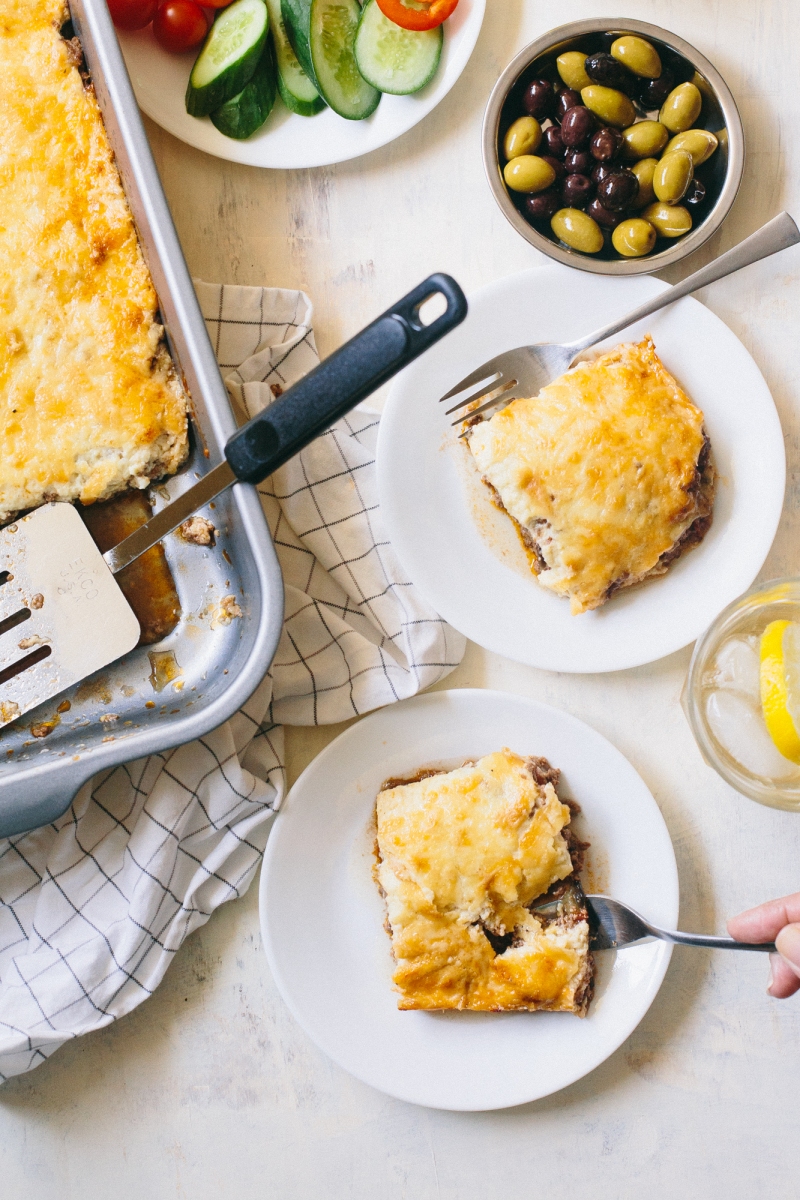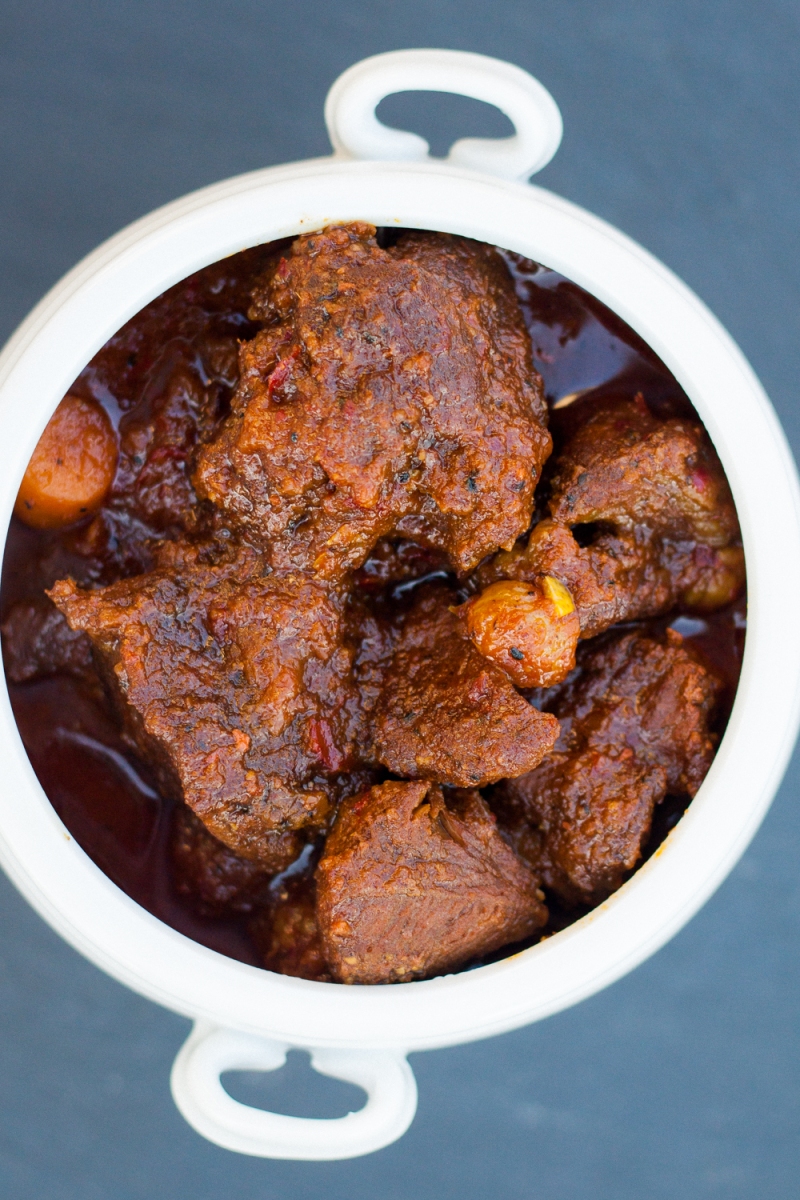
Potjiekos has all of the things I like in a good stew: tender and rich meat, sauce that’s bursting with deep flavors, subtly-seasoned vegetables, and a good backstory. I’ve been watching a lot of Game of Thrones lately (well, once a week), and digging into the show’s theories and lore, so I’m most interested in the backstory part right now. Let’s dig in.
Cast-iron cooking was first popularized in Europe during the 1500s. During the Siege of Leiden, South Holland, in 1573-1574 (part of the Eighty Years’ War between the Netherlands and Spain), the local townspeople turned to communal hodgepodge cooking to survive – in small cast-iron pots, with any meat and vegetables they could find. This communal dish bore the name hutspot, and remains popular today.
Hutspot cooking was carried by Dutch explorers who arrived at the Cape of Good Hope (in present day Cape Town, South Africa) in 1652; over time, the dish started to incorporate new spices brought in from the Dutch East India Company, and took on the name Potjiekos (“small pot food”), using a small three-pronged cast-iron pot called a potjie pot, and cooked over an open fire.
Potjiekos eventually spread throughout South Africa when Voortrekkers (Dutch pioneers), dissatisfied with the then-British colonial administration of Cape Colony, migrated eastwards in 1837 into much of what makes greater South Africa today. Locals appreciated the practicality of potjie pots over their traditional clay pots, and they were integrated into several tribal cuisines – often to cook maize-based porridges such as putu or pap. It’s striking to see these medieval cauldrons take root in a place so far from their origin, and it’s a testament to the adaptability of humankind.
Today, Potjiekos remains a communal dish, cooked outdoors among friends (and a bottle of wine). If you are comfortable with cooking over an open fire, it’s definitely worth the extra effort. For everyone else, adding a bit of liquid smoke can replicate the experience while remaining in the kitchen. I even added Instant Pot instructions below the recipe, for good measure. This dish can be made with any meat, from lamb to chicken to fish, but I prefer the naturally rich flavor that comes from simmering oxtails.
Potjiekos is distinct from traditional stews in that the ingredients are not stirred together until right before serving; instead, the vegetables are layered over the meat and steamed, giving each ingredient its own distinct flavor. Additionally, you don’t want to add much liquid to the pot – just enough to cook the oxtails – since the vegetables will release plenty of liquid as they steam.
Read Full Article










